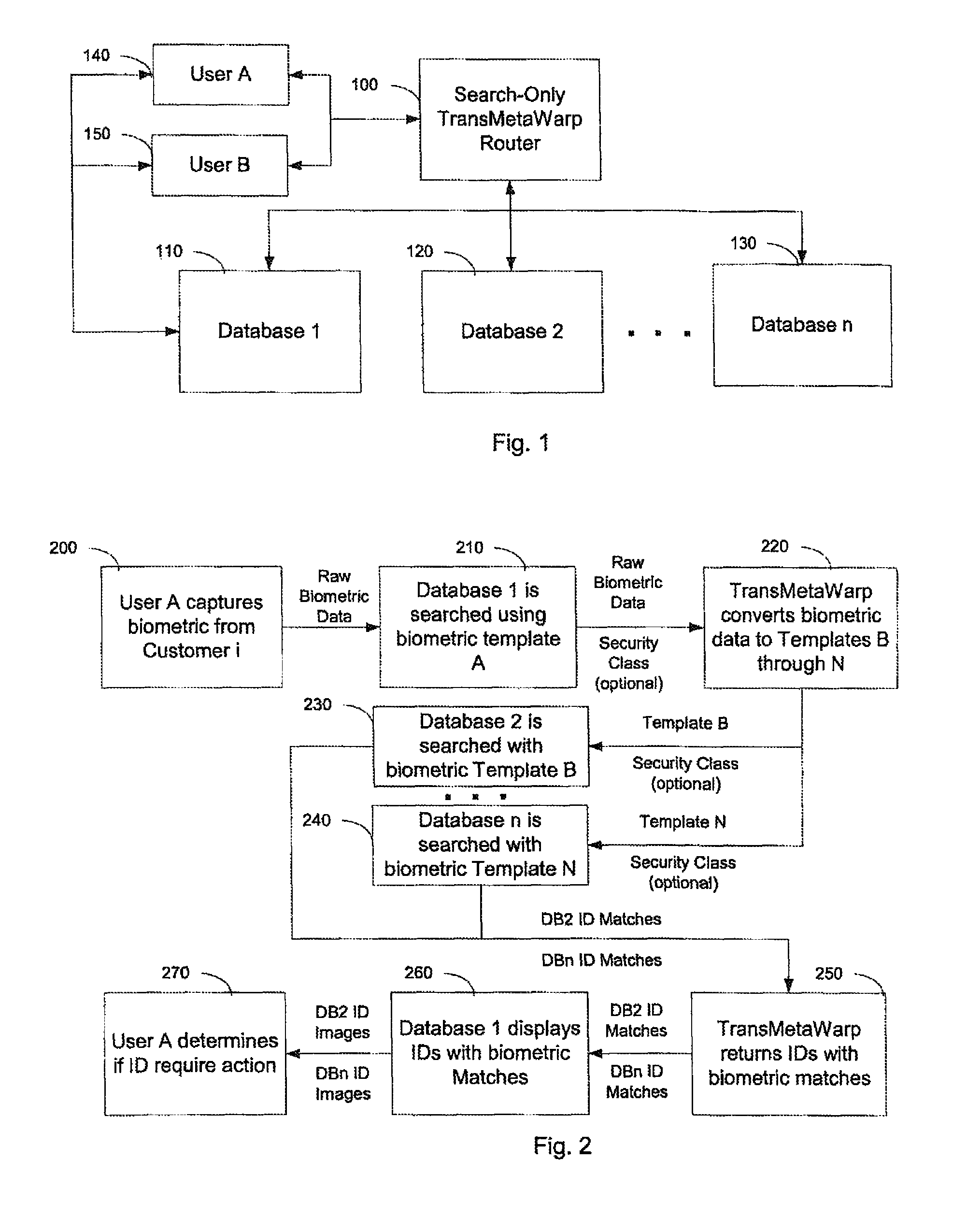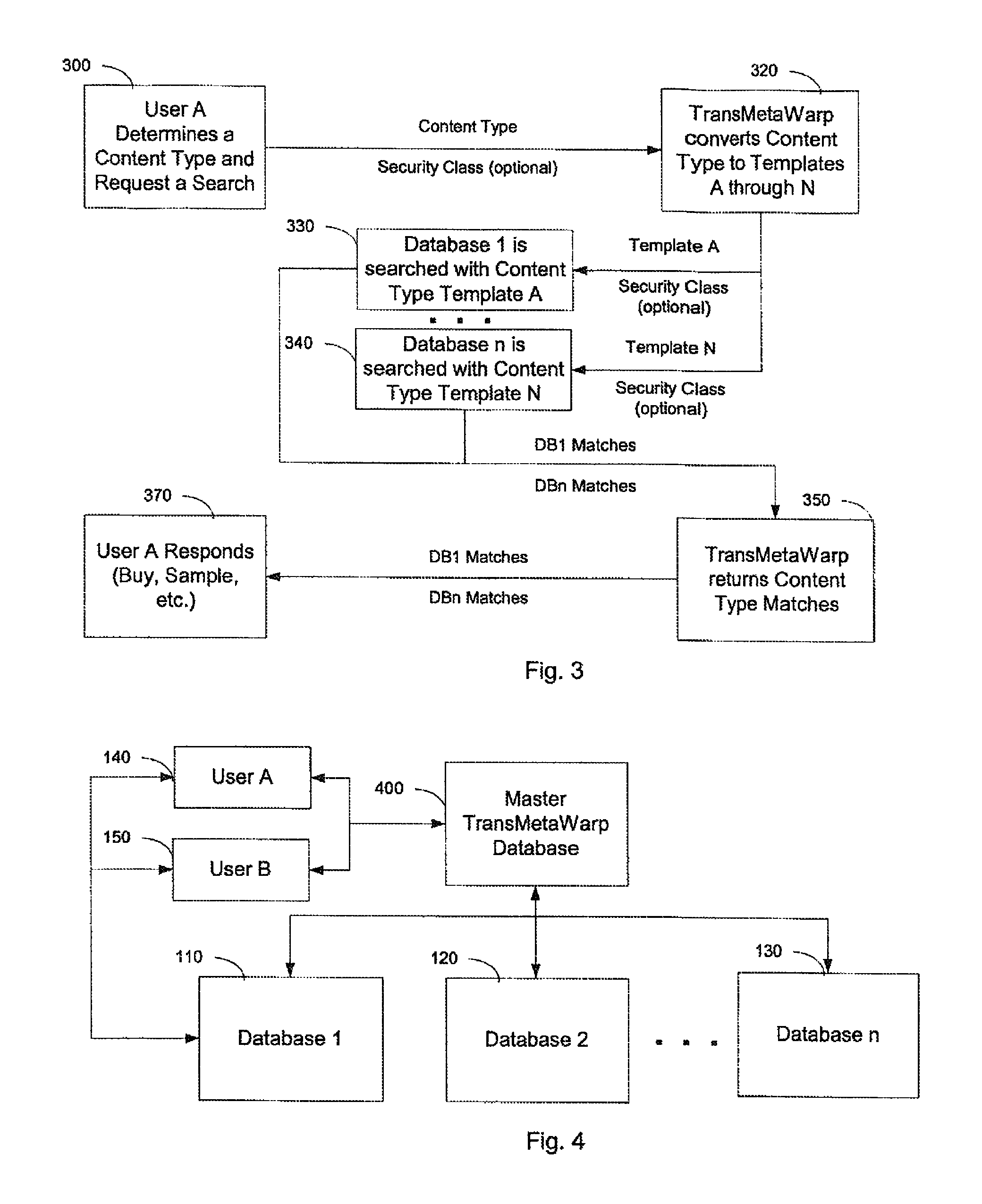Integrating and enhancing searching of media content and biometric databases
a biometric database and multimedia technology, applied in the field of management and searching for multimedia content and biometric data database, can solve problems such as security or privacy issues, difficult to secure certain fields on a central database, and access to similar data from different databases
- Summary
- Abstract
- Description
- Claims
- Application Information
AI Technical Summary
Benefits of technology
Problems solved by technology
Method used
Image
Examples
Embodiment Construction
Search-Only TransMetaWarp Router (FIG. 1)
[0017]FIG. 1 shows an architecture for a search-only TranMetaWarp router system. A usage scenario is that user A's computing device (box 140) is connected to database 1 (box 110) and submits search criteria via a computer network. Database 1 (box 110) sends the search criteria to the TransMetaWarp router (box 100) to search other databases (e.g., database 2 (box 120) through database N (box 130)). The TransMetaWarp router has access to data such that it can convert the search criteria so that databases 2 through N can understand the search criteria. (As such, the system could be called a TransMetaWarp database, but the term “router” is used to better compare this process to that shown in FIG. 4.) Databases 2 through N return search results to the TransMetaWarp database, which, in turn, returns the appropriate results to database 1 and user A. The TransMetaWarp router may have to convert the results such that database 1 and user A can interpre...
PUM
 Login to View More
Login to View More Abstract
Description
Claims
Application Information
 Login to View More
Login to View More - R&D
- Intellectual Property
- Life Sciences
- Materials
- Tech Scout
- Unparalleled Data Quality
- Higher Quality Content
- 60% Fewer Hallucinations
Browse by: Latest US Patents, China's latest patents, Technical Efficacy Thesaurus, Application Domain, Technology Topic, Popular Technical Reports.
© 2025 PatSnap. All rights reserved.Legal|Privacy policy|Modern Slavery Act Transparency Statement|Sitemap|About US| Contact US: help@patsnap.com



